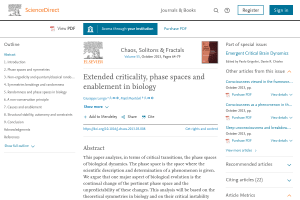
Comparing Symmetries in Models and Simulations
Springer Handbook of Model-Based Science
We distinguish mathematical modeling, computer implementations of these models and purely computational approaches by their symmetries and by randomness.
Abstract
Computer simulations brought remarkable novelties to knowledge construction. In this chapter, we first distinguish between mathematical modeling, computer implementations of these models and purely computational approaches. In all three cases, different answers are provided to the questions the observer may have concerning the processes under investigation. These differences will be highlighted by looking at the different theoretical symmetries of each frame. In the latter case, the peculiarities of agent-based or object oriented languages allow to discuss the role of phase spaces in mathematical analyses of physical versus biological dynamics. Symmetry breaking and randomness are finally correlated in the various contexts where they may be observed.
Keywords: Phase Space, Symmetry Breaking, Chaotic Dynamic, Object Oriented Programming, Genetically Modify Organism


